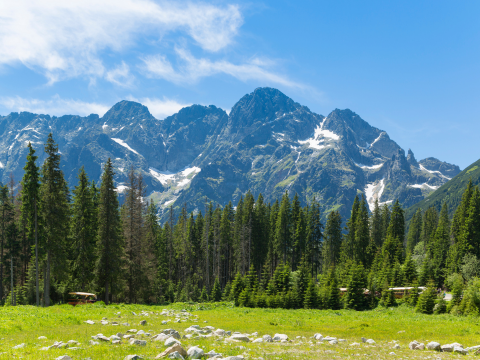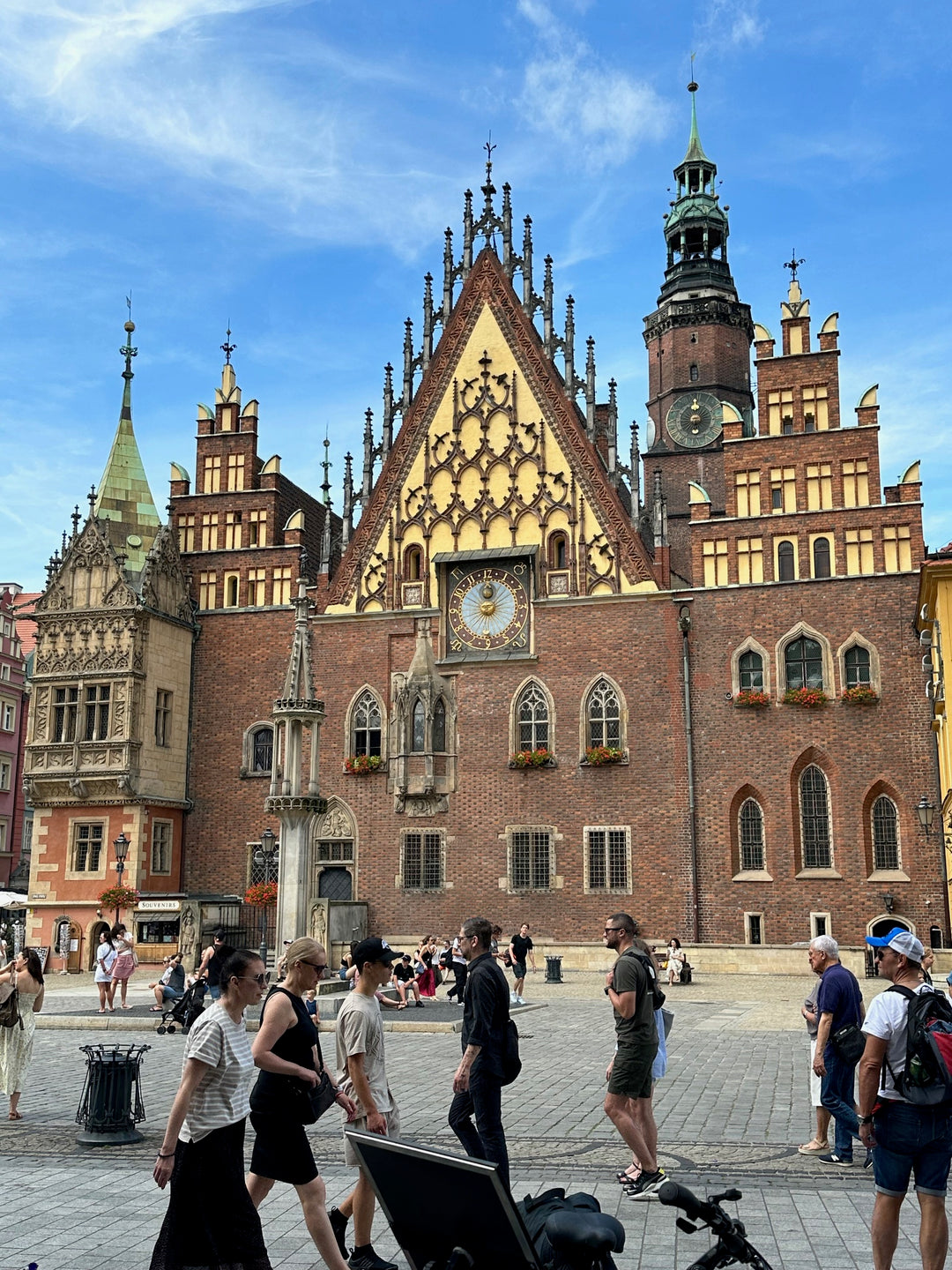Poland Travel Tips - 25 Most Frequently Asked Questions
Planning a trip to Poland?
You're in for an exciting and culturally rich adventure. To help you navigate your journey with ease, we've compiled a list of the 25 most frequently asked questions about traveling in Poland. Whether you're curious about visa requirements, the best time to visit, or what delicious Polish dishes to try, this brief FAQ has got you covered.
Poland offers a captivating blend of historical landmarks, picturesque landscapes, and warm hospitality. As you explore this diverse European destination, our answers to these commonly asked questions will ensure a smoother and more enjoyable travel experience. From understanding local customs to uncovering hidden gems, these tips will empower you to make the most of your visit to Poland. So, let's dive in and discover all you need to know for an unforgettable journey through this enchanting country.

Do I need a passport to travel to Poland?
Yes, you generally need a valid passport to travel to Poland as a U.S./Canadian citizen. Ensure it's valid for at least six months beyond your planned return date.
Do you need a vaccine to travel to Poland?
Poland currently does not require a specific vaccine for entry and stay, including the COVID-19 vaccine.
Do I need travel insurance for Poland?
Travel insurance isn't mandatory for Poland, but it's highly recommended. It provides financial protection in case of unexpected events like medical emergencies, trip cancellations, or lost luggage, ensuring a smoother and more secure travel experience.
Do I need travel insurance for Poland on a Schengen Visa?
Yes, when applying for a Schengen Visa, including one for Poland, travel insurance is a compulsory requirement. The policy should offer at least €30,000 in medical coverage and cover the entire duration of your stay in the Schengen Area, which includes Poland. This insurance is essential for your visa application and peace of mind during your trip.
Is it safe for Americans/Canadians to travel to Poland?
Poland is generally considered safe for American/Canadian travelers. Exercise standard precautions, stay informed, and follow local advice.
Is Poland on The Euro?
Poland doesn't use the Euro; it uses the Polish złoty (PLN) as its currency. Make sure to exchange your currency accordingly.
Is Poland expensive to visit?
Poland is generally considered an affordable destination compared to many Western European countries, making it a budget-friendly option for travelers.
Do I need to know Polish to visit Poland?
Knowing Polish isn't a strict requirement, but learning a few basic Polish phrases can be helpful. Many Poles, especially in tourist areas, understand and speak some English.
Do they speak English in Poland?
Yes, English is widely spoken in Poland, particularly among the younger generation and in major cities, making it easier for English-speaking tourists to communicate.
Travel Adapters For Poland
When traveling to Poland, you'll need a Type E or Type C electrical adapter, depending on your home country's plug type. Type E has two round pins and is the most common in Poland, while Type C has two round pins but is ungrounded. It's a good idea to carry a universal adapter or verify the specific type needed for your devices to ensure they can be used in Polish outlets. Many hotels in Poland also offer adapters for guests' convenience
What is the best time to visit Poland?
The best time to visit Poland depends on your preferences. Spring (April to June) and early autumn (September to October) are generally pleasant with milder weather. Summer (June to August) is popular for outdoor activities.
What is the best month to visit Poland?
The best month to visit Poland can vary, but May and September often offer pleasant weather with fewer crowds.
Is Poland cold?
Poland experiences cold winters, especially in the northern and eastern regions, with temperatures often dropping below freezing. Summers are milder and more comfortable.

How many people visit Poland every year?
Poland attracts several million tourists annually, with varying numbers from year to year. As of last statistic from 2022, it was estimated around 30 million visitors per year.
Is food cheap in Poland?
Food in Poland is relatively affordable for tourists compared to Western Europe.
What is Poland famous for in food?
Poland is famous for offering a wide variety of delicious soups, like żurek (sour rye soup), dishes like pierogi (dumplings), kielbasa (sausage), bigos (hunter's stew), and golabki (cabbage rolls). It's also known for flavorful pork and wild game based dishes served with all kinds of sauces often made with fresh and/or dried wild mushrooms. Poles also consume lots of freshly grated vegetable salads called surówki.

Is vegetarian food available in Poland?
Vegetarian food is available in Poland, especially in larger cities. Restaurants and cafes often offer vegetarian and vegan options, but choices can be more limited in rural areas.
What are the top cities to visit in Poland?
Poland offers a wide range of fascinating cities to explore. Warsaw, the capital, is known for its history and vibrant nightlife. Krakow is famous for its stunning architecture and the charming Old Town. Gdansk is a coastal city with a rich maritime heritage, while Wroclaw is often called the "Venice of Poland". Other notable cities include Poznan, known for its beautiful market square, and Lodz, famed for its thriving arts scene.
How many days to visit Krakow Poland?
To explore Krakow, a stay of 3 to 4 days is recommended to see the main attractions and soak in the city's atmosphere.
How many days to visit Warsaw Poland?
To visit Warsaw, Poland's capital, you'll want to spend at least 2-3 days for a basic city tour. For a more in-depth experience, including museums and cultural exploration, consider 4-5 days.
How many days to visit Gdansk Poland?
For Gdansk, a historic port city, 2-3 days should be sufficient for a general visit. To explore more thoroughly, including nearby Sopot and Gdynia, or at a relaxed pace, plan for 4-5 days.
How many days to visit Zakopane?
The number of days to visit Zakopane varies from 2-3 days for a quick visit to 5-7 days for a more extensive exploration, especially if you plan to hike in the Tatra Mountains.
Best time to visit Zakopane Poland?
The best time to visit Zakopane, Poland, depends on your preferences.
Winter: December to February for skiing and winter sports.
- Winter: December to February for skiing and winter sports.
- Spring: Late March to May for milder weather and hiking.
- Summer: June to August for outdoor activities and pleasant weather.
- Autumn: September to October for fall foliage
Does Poland have good public transportation?
Public transportation in Poland is well-developed, especially in major cities like Warsaw, Krakow, and Gdansk. It includes trams, buses, and an extensive network of local trains. Tickets are affordable and easy to purchase, making it convenient for tourists to get around. In Warsaw and other urban areas, metro systems are available, further enhancing mobility.
Rail Transport in Poland
Poland has a robust rail network connecting cities and towns, making it a convenient way to travel between regions. The Polish State Railways (PKP Intercity) offers modern and comfortable trains for longer journeys. High-speed rail links Warsaw to other major cities. It's an efficient and scenic way to explore the country, with good connections to neighboring countries like Germany and the Czech Republic.
What Countries Border Poland?
First, it's important to know that Poland is located in Central Europe. It shares its borders with seven countries. To the west, it borders Germany, and to the south, it shares borders with the Czech Republic and Slovakia. In the east, Poland is adjacent to Ukraine and Belarus. To the north, it has a coastline along the Baltic Sea, where it shares maritime borders with Sweden and Denmark. These diverse bordering nations contribute to Poland's rich cultural and historical interactions, making it a fascinating and strategically located European country.





Leave a comment